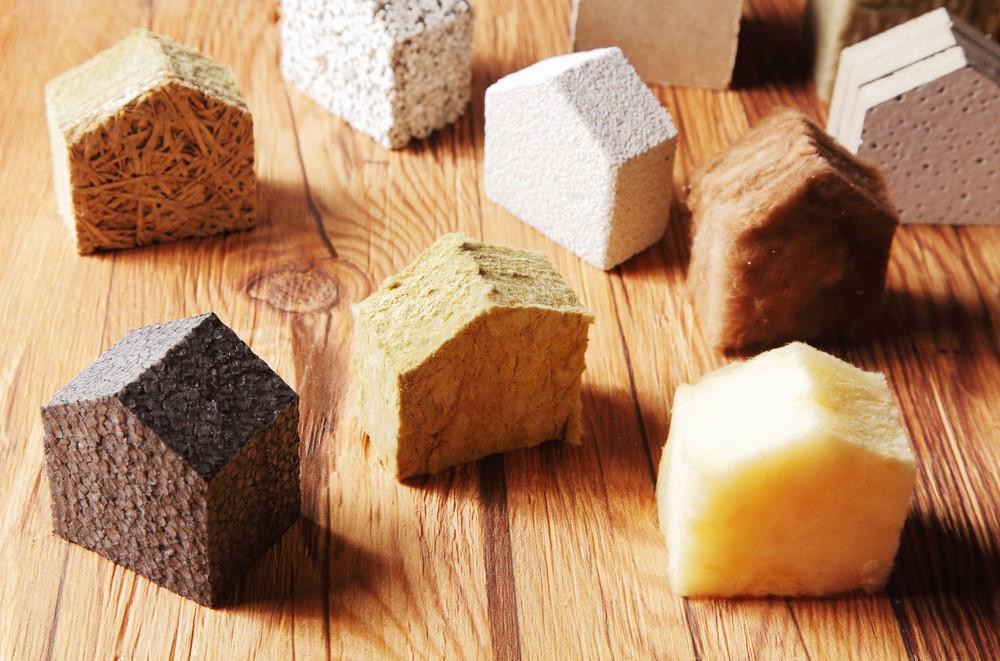
"R-value" was BPI’s Phrase of the Month in January, and you can find an excellent summary of what it means in practical terms here. R-value was defined as, "The higher the R-value, the greater the ability to resist conductive heat transfer."
In practical terms, this means that the thicker the insulation, the more efficiently you can keep your home comfortable. However, insulation is not the only way to monitor your home's heating and cooling. From solar-panel-powered heating systems to a Passive House retrofit, there are a number of energy-efficient ways to keep your home energy costs down. But before diving in to those other solutions, let's take a closer look at R-value.
Defining R-value
Here's how the math works out for determining the strength of insulation:

Some of these factors are out of your control. Unless you're willing to get a smaller house, you can't change the area of the walls. And, the difference in temperature is dependent on the weather outside versus what you're comfortable with inside of your house. Of course, you could turn the thermostat down or up to more closely match the outside temperature, but besides that, you can really impact those two factors. What you can control is the thermal conductivity of the wall material used in construction and its thickness.
That leaves conductivity and thickness, which are conveniently rolled up into a "resistance of heat transfer." When multiplied by the area of your home, this produces the commonly used term "R-value." R-value can be expressed as the unit thermal resistance:

Practically speaking, when you buy insulation, the higher the R-value, the better the insulation. In fact, if the R-value of insulation is doubled, the heat going into (or out of) your house is cut in half. This also means that the larger your walls are, the more heat will be lost to (or gained from) the environment, directly proportional to their area. Well, almost.
Dealing with other household factors
Like many topics in engineering, insulation isn't quite that straightforward. Studs tend to conduct quite a bit more heat than insulation, so this part generally won’t change if new insulation is added. Then you also need to factor in doors, windows, and other complicating factors. Doubling the R-value of your insulation will help keep you warm, but likely won't double your entire house's resistance to losing heat. Also, if insulation is compressed, the thickness factor, and thus the R-value goes down, so avoid compressing your insulation when possible.
Any other layers (like bricks on the outside of a house) between the inside of a house and the environment do also help resist heat transfer, improving your house's overall efficiency. For that matter, the simple equation discussed here is just scraping the surface of a subject that many engineers have thoroughly studied and work with to make their living. There is much to consider beyond this equation, so don't hesitate to contact a professional if you are considering renovations, or if your house just seems like it takes too much energy to stay hot or cold. You may want to research other HVAC options for your home as well.
Alternative energy HVAC solutions
It's important to note that keeping heat in, or out, through insulation is only one aspect of keeping your heating, ventilation, and air conditioning (HVAC) costs down. If your HVAC equipment is old, consider getting a new, energy-efficient system. If you'd like to reduce your heating bills — which accounted for 45% of energy costs in the average US home in 2013 — you could consider a solar panel-powered heating system. For example, you could install panels that heat a liquid to transfer energy indoors. Or, you could install a thermosiphon collector on a southward-facing wall. For summer months (or all year in some areas), you can even buy an air conditioning unit that can be powered primarily via sunlight. Combine any of these with a high-R-value insulation, and you'll have a comfortable, energy-efficient home.
Jeremy Cook is an engineer who loves to explore technology. He writes for The Home Depot about the cool things you can do with tech. His topics cover everything from alternative energy solutions to home automation. If you are interested in using alternative energies in your home, visit The Home Depot for more info.

Follow us